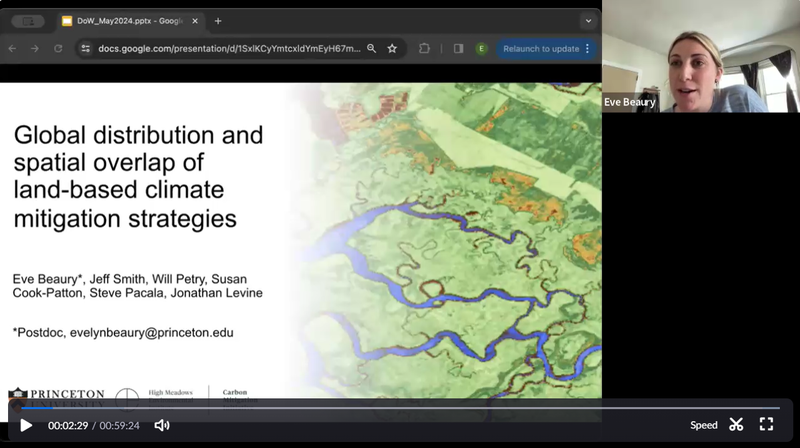
Mapping the global spatial potential and biodiversity impacts of land-based climate mitigation

Mapping the global spatial potential and biodiversity impacts of land-based climate mitigation
Limiting climate warming to 2 degrees Celsius requires a dramatic energy system transformation paired with the widespread deployment of land-based mitigation strategies - a suite of land use and land management practices that harness plant and soil processes to reduce carbon emissions and increase carbon sequestration. These strategies (sometimes called climate solutions) differ in their land-use requirements, as well as their co-benefits to people and biodiversity. In this talk, Dr. Beaury will discuss efforts to compile a global atlas of maps delineating areas that are geographically compatible with 19 strategies for land-based climate mitigation. Dr. Beaury will also briefly discuss two projects exploring the local and global impacts of land-based mitigation on biodiversity, and how they are using findings from these studies to spatially co-optimize the placement of land-based and energy-based climate mitigation efforts.
Dr. Beaury is a global change ecologist and biogeographer. She received a PhD from UMass Amherst, where she studied the spatial distribution and impacts of invasive plants across various stages of the invasion process. In her postdoc at Princeton, she is studying the land-use and biodiversity impacts of climate mitigation interventions and the global transition to a more sustainable energy future. In the fall, Dr. Beaury will be starting a position at the New York Botanical Garden, building a research program on the interactions between invasive species, land-use change, and climate change in the context of the global biodiversity crisis.